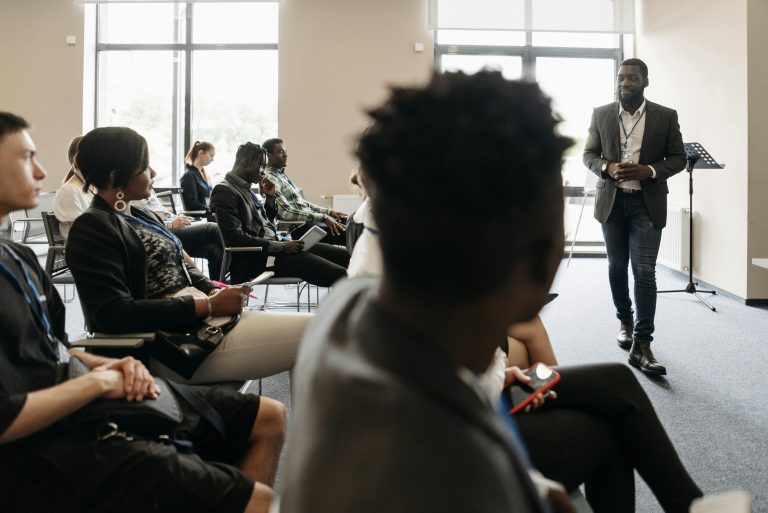The movement for racial equity is as much about dialogue as it is about action. While policies, protests, and education all play vital roles, the spoken word—delivered powerfully and with intent—has a unique ability to connect, challenge, and mobilize.
Keynote speaking serves as a dynamic medium for amplifying voices that might otherwise go unheard, elevating the conversation around racial justice in ways that foster deeper understanding and long-lasting impact.
Inspiring Change by Humanizing the Narrative
One of the most powerful aspects of keynote speaking in the racial equity space is its ability to humanize systemic issues. Through storytelling, speakers can draw personal connections to broader social structures, allowing audiences to see how inequality manifests in real lives.
These stories turn abstract data into lived experience, building empathy that drives collective action. The emotional resonance created in these moments often becomes the catalyst for shifting perspectives, prompting attendees to reflect on their own roles in advancing equity.
Bridging Gaps Across Diverse Communities
In many spaces—corporate boardrooms, educational institutions, and community forums—there exists a gap in lived experiences when it comes to race. Keynote speakers offer an opportunity to bridge that divide, introducing perspectives that may not be present in everyday discourse.
By highlighting different cultural narratives, speakers like Thomas Jones, foster mutual respect and build the foundation for inclusive environments. A keynote speaker who specializes in racial justice brings both expertise and authenticity, creating space for dialogue that is both informed and deeply personal.
Their presence not only educates but validates the lived experiences of marginalized communities, making institutions more responsive and culturally aware. This kind of leadership is essential for cultivating environments where equity is not just a value, but a practiced commitment.
Challenging Norms to Encourage Critical Thought
Keynote speaking is not just about affirmation—it is also about challenge. Effective speakers disrupt complacency, asking audiences to reconsider long-held assumptions or unconscious biases.
This intellectual discomfort is not an obstacle but a tool for growth. When audiences are prompted to interrogate societal norms, they become more equipped to recognize injustice and to imagine alternatives. In this way, keynote speaking encourages a culture of critical thinking around race and equity, one that extends far beyond the event itself.
Providing Tools for Engagement and Empowerment
Beyond inspiration, keynote speakers often equip their audiences with language, frameworks, and strategies for engaging more actively with racial equity. Whether addressing allyship, institutional accountability, or intersectional advocacy, these talks offer practical insights that listeners can apply in their personal and professional lives.
The most impactful sessions leave attendees not just moved, but prepared to participate in meaningful change. These takeaways help embed equity into ongoing conversations and decision-making processes.
Sustaining the Momentum for Racial Justice
The work of racial equity is ongoing, and keynote speaking plays a vital role in sustaining momentum. Each speech serves as a checkpoint—an opportunity to reflect on progress, recommit to values, and reinforce the urgency of justice. When these messages are consistently amplified, they maintain visibility for racial equity issues even outside of times of crisis. This continued attention is crucial for fostering enduring cultural and institutional transformation.
Keynote speaking is more than an event—it is a platform for visibility, a tool for education, and a driver of systemic awareness. In the hands of skilled voices, it becomes a means of advancing the conversation on racial equity with clarity, compassion, and conviction.





